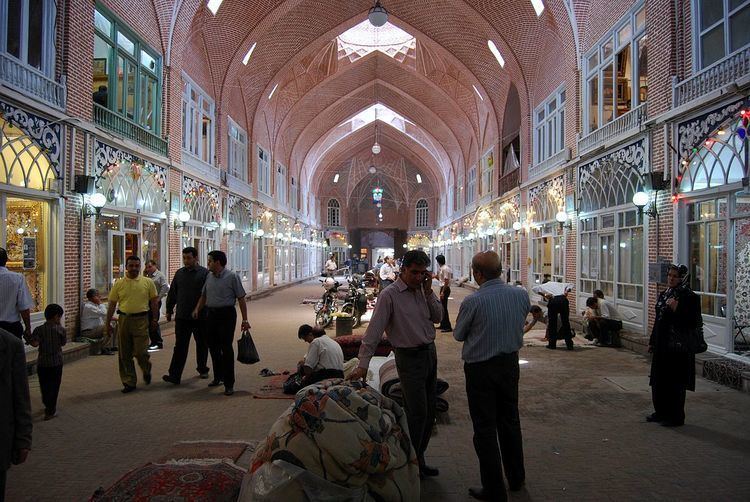Criteria ii, iii, iv UNESCO region Asia and Australasia | Type Cultural Reference 1346 UNESCO World Heritage Site inscription 2010 | |
 | ||
Similar Blue Mosque - Tabriz, Azerbaijan Museum, Saat Tower, Sheikh Safi al‑Din Khānegā, Arg of Tabriz | ||
The Bazaar of Tabriz (Persian: بازار تبریز, also Romanized as Bāzār-e Tabriz) is a historical market situated in the city center of Tabriz, Iran. It is one of the oldest bazaars in the Middle East and the largest covered bazaar in the world. and is one of Iran's UNESCO World Heritage Sites.
Contents
History
Tabriz has been a place of cultural exchange since antiquity. Its historic bazaar complex is one of the most important commercial centres on the Silk Road. Located in the center of the city of Tabriz, Iran, the structure consists of several sub-bazaars, such as Amir Bazaar (for gold and jewelry), Mozzafarieh (a carpet bazaar, sorted by knot size and type), shoe bazaar, and many other ones for various goods such as household items. The most prosperous time of Tabriz and its bazaar was in the 16th century when the town became the capital city of the Safavid kingdom. The city lost its status as a capital in the 17th century, but its bazaar has remained important as a commercial and economic center. Although numerous modern shops and malls have been established nowadays, Tabriz Bazaar has remained the economic heart of both the city and northwestern Iran.
Tabriz Bazaar has also been a place of political significance, and one can point out its importance in the Iranian Constitutional Revolution in the last century and Islamic Revolution in the contemporary time.
The bazaar was inscribed as a World Heritage Site by UNESCO in July 2010.
Ceremonies
The bazaar is used for some important religious ceremonies. The most famous one is Day of Ashura during which merchants cease trading for about 10 days and religious ceremonies are held inside the bazaar. Like other bazaars in Middle East, there are several mosques constructed behind the bazaar, the most notable of them being Jome' Mosque.
Restoration
In 2000, the Historical Hermitages Organization of Iran begin a restoration project of the Bazaar, with the full participation of the shop owners. The rehabilitation project won the Aga Khan Award for Architecture in 2013.
